So, you’ve finally decided to go all out and get a Roomba for your home to help you clean your floor efficiently. However, the robot vacuum keeps getting stuck and forcing you to free it every five minutes.
Here’s what you can do if your Roomba keeps getting stuck:
- Clear out obstacles and clutter before turning on the Roomba.
- Install furniture risers.
- Find an optimal position for the Roomba deck.
- Turn on the lights to improve visibility.
- Wait for a software update.
- Contact customer support.
In this article, I’ll get into a more detailed analysis of why your Roomba keeps getting stuck. In addition, I’ll share some tips and tricks on how to handle a stuck robotic cleaner. If that doesn’t seem enough, you can also expect advice on preventing the device from getting stuck in the first place.
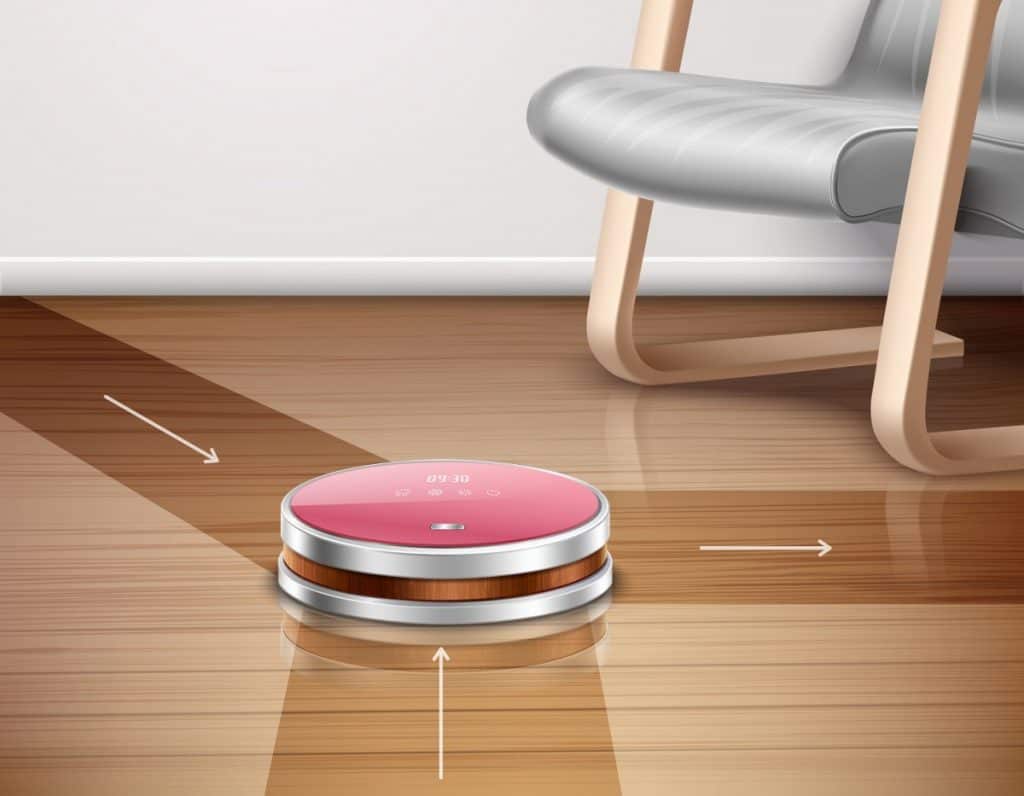
Why Does My Roomba Keep Getting Stuck?
While undeniably convenient, Roombas and similar autonomous robotic vacuum cleaners have a known and slightly annoying quirk of getting stuck. Whether it’s under a piece of furniture, on a thicker rug, or over a small obstacle, you must be wondering why this keeps happening.
Your Roomba keeps getting stuck for two main reasons. Roombas and similar autonomous vacuums get stuck when they encounter an obstacle and clutter and because of the way they’re designed. Losing signal to the dock or experiencing visibility issues can cause a Roomba to get stuck.
Let’s get more in-depth with each of these issues and explain why getting stuck is such a common problem for Roombas and other automated vacuums:
Your Roomba Keeps Getting Stuck on Obstacles and Clutter
Running into an obstacle is the most common reason why your Roomba keeps getting stuck.
Furniture, thick rugs, and cables are just some of the obstacles that your automatic vacuum can get stuck on. Low sofas, a shirt, or a toy thrown in the middle of the room, or any other form of clutter can represent an impassable barrier for your Roomba. Shaggy rugs and carpets are also an issue for the device.
The reason why all of these everyday household items interfere with Roomba’s movement is probably the device’s size and/or the inability to avoid these obstacles. While some are simply too large or too low to get over or under, others might interfere with the device’s sensors in other ways.
You can read more about solving this issue further down this text.
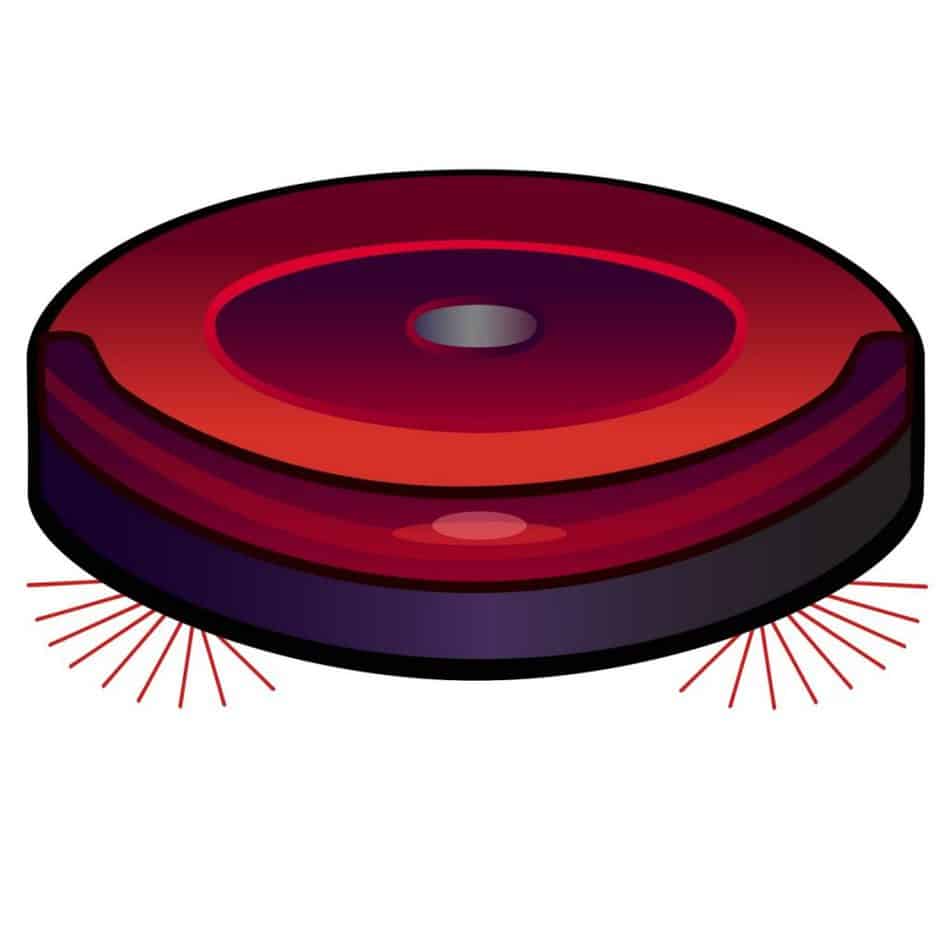
Your Roomba Keeps Getting Stuck for Other Reasons
As already mentioned, obstacles aren’t the only reason your Roomba is getting stuck. Sometimes, the reason might not be as apparent.
There’s one other major reason Roombas get stuck, and that reason is a part of the cleaning gadget’s design.
Your Roomba is designed to work in optimal conditions. There are two major ones you need to fulfill to prevent the device from jamming up:
- The Roomba’s Homebase needs to be placed in an optimal spot.
- Turn on the lights in order for Roomba’s sensors to work properly.
Even though both of these elements might seem trivial, they need to be accommodated for any robotic vacuum to work as intended. More on why this is the case and how to make sure you’re in compliance with iRobot’s guidance later.
Things To Do if Your Roomba Keeps Getting Stuck
Now that you’re familiar with the potential reasons behind why Roombas can get stuck, it’s time to move on to solving and preventing the issue from occurring.
1. Clear Out Obstacles and Clutter Before Turning On the Roomba
The first step you should look into if your Roomba keeps getting stuck is whether there’s any clutter around. Removing the mess and any obstacles that might be in the automatic vacuum’s way is also the first step in preventing and resolving the issue.
This can be divided into subsequent steps that you can follow to ensure your Roomba runs smoothly:
Clear Out Any Unneeded Clutter
To make sure that the Roomba’s path is unobstructed, clear any mess you might have around the house. This includes removing any clothing, pillows, toys, and other items from the floor. All of these can be what’s blocking the smart appliance from working its magic.
While you’re at it, pay special attention to smaller items such as Legos and pins, as they can damage your Roomba’s internal components.
Sort Out Any Cables Lying Around
What you should do next to clear the path for your Roomba is to sort out any messy cables and cords.
Organizing your cables neatly and running them as close to the walls as possible is especially important near entertainment centers, nightstands, and any other areas that the device already might have difficulties reaching. This will prevent your Roomba from getting tangled into a nest of cables and cords and freezing up.
Roll and Temporarily Move Any Thick Rugs
All objects that might get into the Roomba’s way should be removed to ensure that the device can move freely. This especially applies to thicker carpets.
Despite the fact that it’s advertised as a decent solution for cleaning all types of carpets, Roomba can struggle with the fuzzy ones and get stuck while vacuuming them. Permanent damage to its mechanism (wheels, brushes, etc.) can be caused this way.
Block Off Any Areas With Low or Impassable Objects
Sometimes, it’s not possible to temporarily remove items from your home just to run the vacuum. Whether it’s the tight space or any other issue involved, your Roomba will continuously get stuck in these spots.
To avoid getting the smart vacuum stuck, block off these areas with larger items (a piece of cardboard will work fine). The Roomba’s sensors will recognize the block and keep the device running in a different direction.
I’m aware that all of this can seem like too much work. One might also think that this amount of effort defeats the point of having an automatic cleaner. However, once you’ve fulfilled the list, staying on top of the clutter in your home will ensure that Roomba keeps cleaning on its own with no hitches.
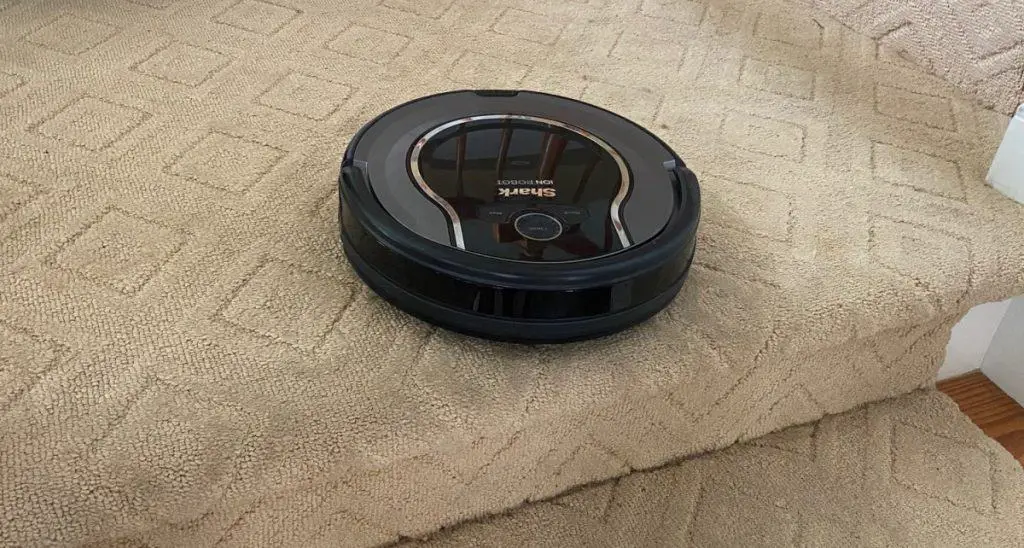
2. Install Furniture Risers
The height issue is another common concern with Roombas. There are dozens of software and hardware elements guiding the Roomba. However, your autonomous sweeper can still be easily fooled into getting stuck beneath a sofa or a lounge chair that it can’t exactly fit under.
Although it’s not exactly the tallest device out there, a Roomba still needs more than 3.6 inches (9.14 cm) of space to get under furniture.
The easiest advice I could provide for this issue is to buy taller furniture. However, while a great solution for those already planning on redecorating their living space, this isn’t an option for most people.
This is why I’d suggest buying a set of furniture risers for your home. Furniture risers are a simple solution to the problem at hand, and they can also be elegant.
While numerous choices are available on the market, I’d recommend getting the Fasonla Furniture Risers (available on Amazon.com). They’ll elevate your furniture by 3 inches (7.62 cm), and they come in a large set, with three color options to choose from.
3. Find an Optimal Position for the Roomba Dock
Your Roomba’s docking station is one of the most essential elements of the entire robot vacuum cleaning system.
We’re all aware that this is the spot where the Roomba charges and where newer models empty their dustbins. However, have you ever wondered why the manufacturer refers to the dock as the Homebase for the higher-end models?
The answer to that question is found in the fact that the Homebase doesn’t only perform all of the tasks mentioned, but it also helps navigate Roomba around the house. Vital instruments for positioning triangulation are situated in the dock itself.
For this reason and more, where you place the docking station for your Roomba is very important. Here are some things to keep in mind while choosing the right spot for it:
- Place the Homebase in a spot that has the clearest view of the entire area the vacuum is used in. Ideally, you should place it in the center of the home.
- Make sure that the robot has enough space to maneuver and line up with the dock.
- Leave 1.5-3 feet (0.46-0.91 m) of space on both sides of the Homebase.
- Leave at least 4 feet (1.22 m) of space in front of the docking station.
- Avoid placing the dock near stairs, in corners, and in closeted spaces.
Open space floor plans are as close to an ideal environment for Roombas to operate as possible. There aren’t many walls to interrupt the signal between the device and its station. On the other hand, if you follow all of the advice listed above, your Roomba will work just as fine in any type of space.
Despite the fact that all of these requirements are reasonable, most homes aren’t able to fulfill them due to the lack of space. If this is the case with your home, you can expect minor inconvenience with your Roomba’s operation.
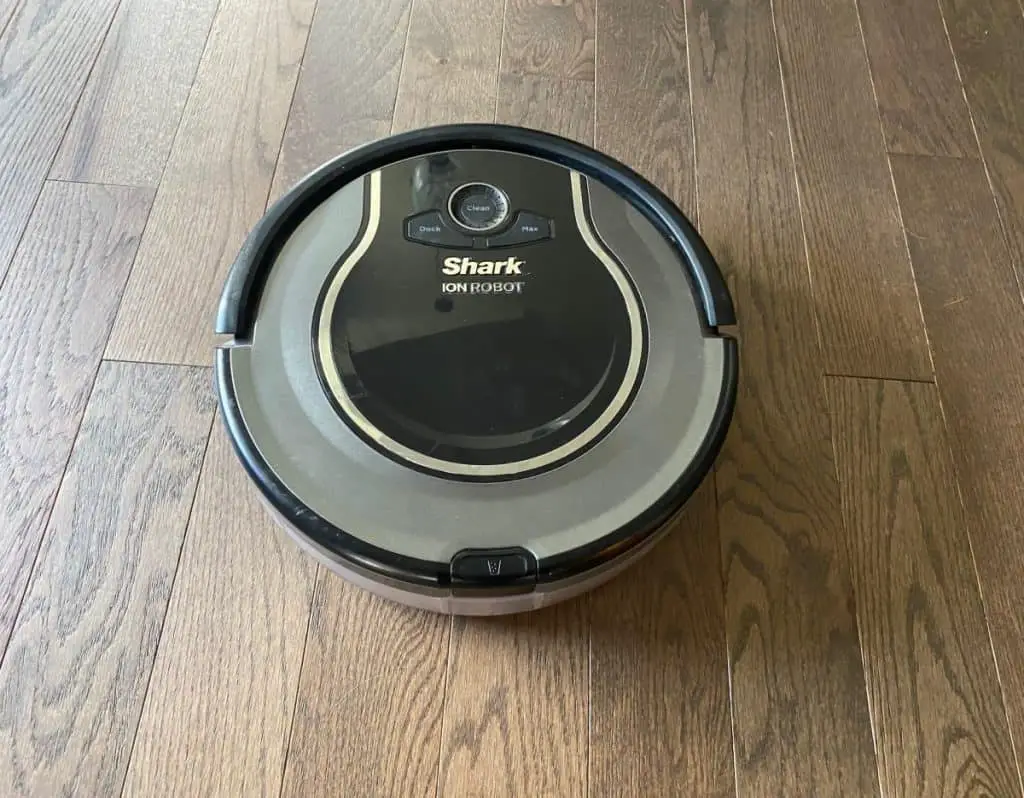
4. Turn On the Lights To Improve Visibility
Most autonomous robotic vacuum cleaners available on the market rely on a series of infrared and optical sensors to avoid obstacles. Roombas are also one of them.
As these sensors become obscured due to the lack of light, the device might keep bumping into objects or getting stuck under them due to the inability to recognize them. For this reason, operating a Roomba in a well-light area is a must. If there’s not enough natural light, the lights will need to stay on when the vacuum is running.
The darkness-sensitive side of Roombas also comes into play with dark furniture and rugs. If your favorite cleaning machine keeps bumping into dark objects or keeps avoiding dark rugs, this might be the cause.
5. Wait for a Software Update
One of Roomba’s weaknesses is software bugs. This element shouldn’t be disregarded as one of the potential reasons why your Roomba seems so clumsy.
During a recent update, a large number of Roomba users noticed that their device started acting bizarrely. Strange cleaning patterns and getting stuck more frequently were just some of the reported symptoms.
Like with the update mess mentioned above, it can take a couple of weeks for the company to resolve the issue. If you suspect that your home robot might be affected by a software error, you’ll need to arm yourself with plenty of patience.
6. Contact Customer Support
If none of the solutions mentioned above work and your Roomba keeps getting stuck, there’s only one thing left to do.
Rather than getting angry and smashing the device, contact the iRobot customer support.
One of the reasons mentioned is the likeliest cause of your Roomba getting stuck. However, if persistent, the problem can be a manufacturing or a shipping defect that they can help you with.
Each device sold in North America comes with a one-year warranty. Keep in mind that the warranty period for the Roomba’s battery is just six months.
Also, note that none of the methods listed in this article are invasive or in violation of the warranty.
You can contact customer service through one of the methods listed on their website.
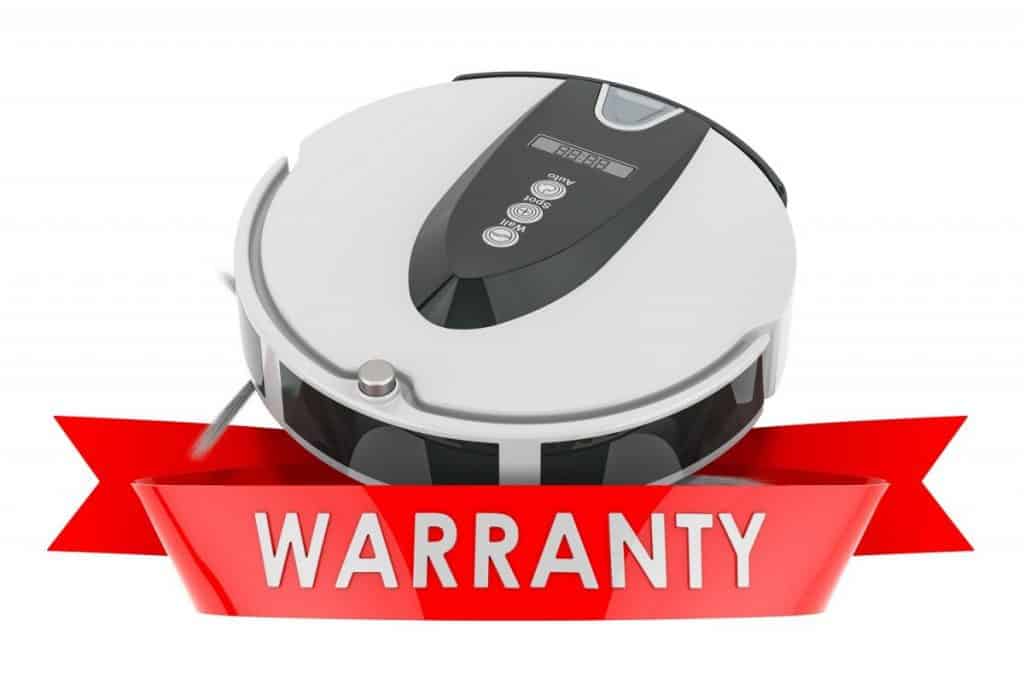
Conclusion
As smart and useful as they are, Roombas and similar autonomous cleaning devices can often be less than clever and agitating, especially if they keep getting stuck in the same spot. The things you can do to prevent your Roomba from getting stuck include:
- Decluttering the space.
- Restricting access to spaces with low furniture and objects that the Roomba can’t get over.
- Moving the smart vacuum cleaner’s charging dock to a better spot.
- Improving visibility with lighting.
- Getting in touch with customer support.
Using the process of elimination, one of the suggestions listed should solve your Roomba getting stuck problem for good.
